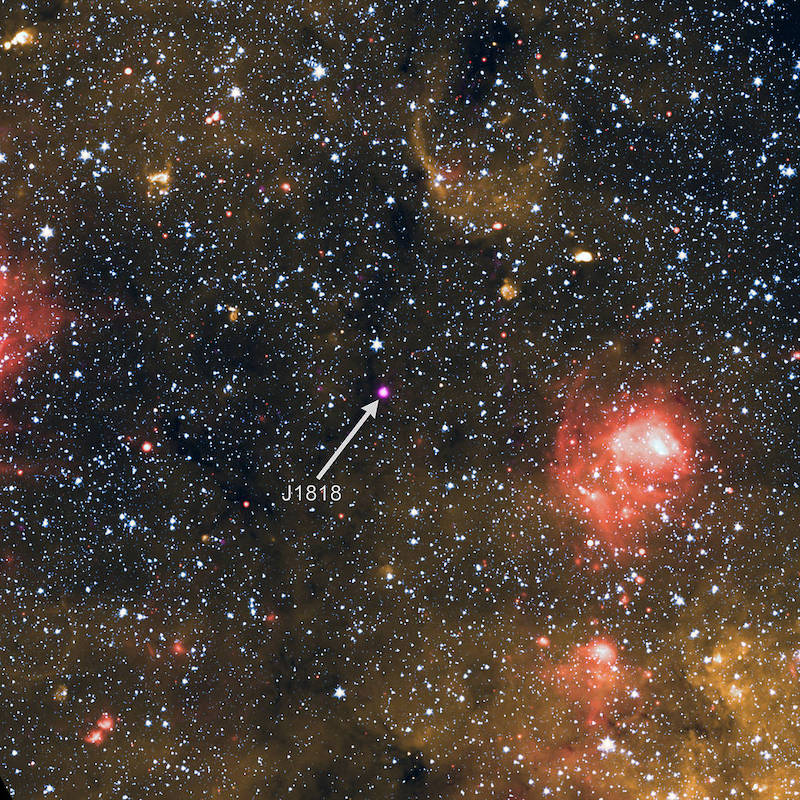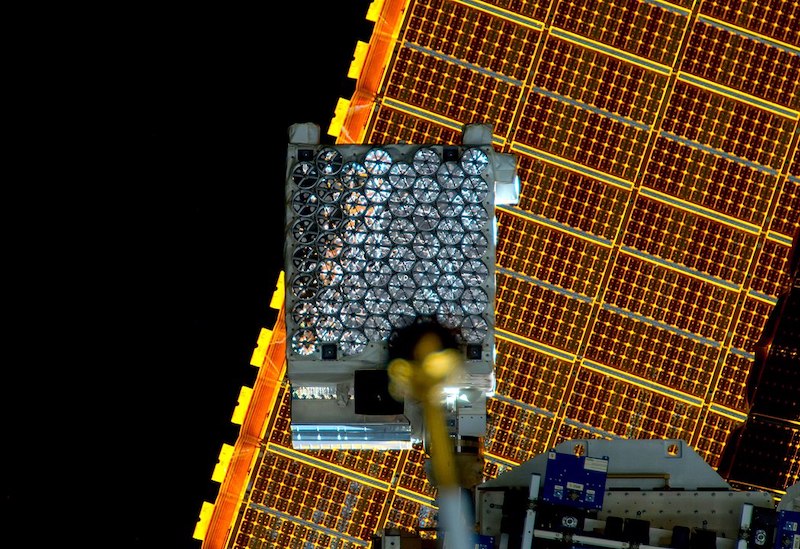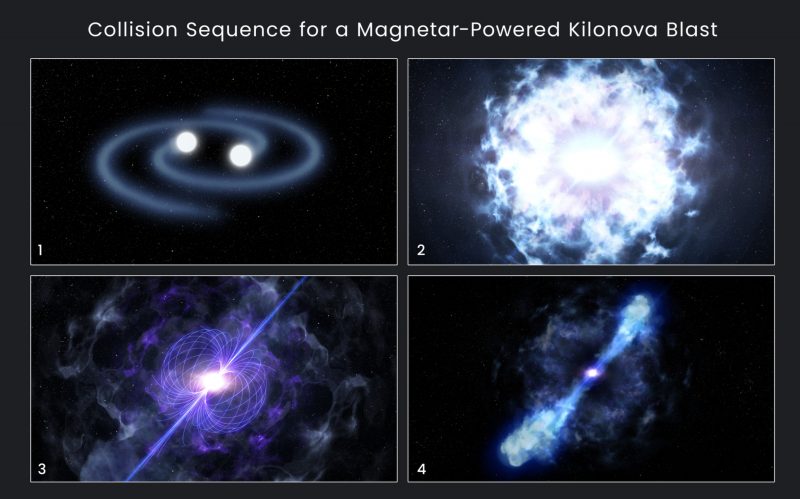
Magnetic magnetars
Can you imagine a magnet so powerful that it could wipe every credit card on Earth from a distance halfway to the moon? That is how strong the magnetic field of a magnetar is! A magnetar is an exotic type of neutron star, its defining feature that it has an ultra-powerful magnetic field. The field is about 1,000 times stronger than a normal neutron star and about a trillion times stronger than the Earth’s.
Magnetars are, by far, the most magnetic stars in the universe. If you were to venture closer to a magnetar than about 600 miles (1,000 km), you would die very quickly. Its magnetic field would destroy your body, tearing away electrons from your atoms and converting you into a cloud of monatomic ions, that is, single atoms without electrons.
A magnetar is extreme in many ways
Apart from these ultra-powerful magnetic fields, magnetars also release vast amounts of energy in the form of flares, X-rays, and gamma-ray bursts. They are therefore associated with extreme events in the universe, making them perhaps the most bizarre objects in the cosmos next to black holes.
As an example of extreme behavior, in 2004 a flare on the surface of a magnetar compressed the magnetic field of the Earth … from a distance of 50,000 light years! When you consider that a neutron star is about the size of a city – a recent revision of neutron star size puts it at maximum of 15 miles (24 km) across – but may contain 1 1/2 times the mass of our sun, it is incredible that a such a tiny object can generate enough energy to affect others at such a vast distance.

What gives a magnetar its magnetism?
Astrophysicists do not yet know exactly how a magnetar generates its stupendous magnetic field. However, it probably relates to the incredible density of neutron stars and their bizarre interiors. Just one sugar cube-sized amount of neutron star material would weigh a billion tons on the Earth … about the same as an average mountain!
The magnetic field of a magnetar may be caused by a neutron star’s interior – thought to be made up of neutrons, quarks and exotic states of matter such as Bose-Einstein Condensates – becoming a superconducting fluid. Thus, when the star rotates, it would behave like a huge dynamo, generating an immense magnetic field.
Or, the field may simply have its origins in its progenitor star – the kind of star it was before it become a neutron star – which may have had an unusually strong magnetic field.
In an effort to solve this enigma, astronomers launched an instrument called the Neutron Star Interior Composition Explorer (NICER) to the International Space Station in 2017. Its specific goal is to determine what exactly is inside neutron stars.
So far, NICER has enabled astronomers to make more accurate measurements regarding size and density parameters of these strange cosmic beasts.

We also stand to learn more about neutron stars from the gravitational waves they generate when two of them collide, such as in the famous gravitational-wave event GW170817.
Cosmic lighthouses
A few magnetars are also pulsars, those celestial lighthouses that sweep the sky with powerful radio beams (and, rarely, beams of visible light too, such as in the case of the Crab Nebula). Recently, detecting a magnetar that is also a pulsar enabled astronomers to establish an accurate distance to a magnetar for the first time.
First magnetar detection a mystery
The first event that originated from a magnetar showed up in 1979, although at that time astronomers did not identify the activity as belonging to a separate class of objects. It occurred when two Russian spacecraft suddenly observed a huge blast of gamma radiation in their detectors: readings on both the probes went up from a normal 100 counts per second to over 200,000 counts a second, in a fraction of a millisecond. This was more than a hundred times the energy of any extrasolar gamma-ray burst previously detected. Five satellites and two observatories also registered it, as the wave of gamma radiation traveled through the solar system.
When astronomers tracked down where the burst had originated, it corresponded to the location of a known supernova in the Large Magellanic Cloud. The object that generated this huge wave of gamma radiation has since repeated the event, making it the first known soft gamma repeater.
Nobody knew the exact cause of the event back in 1979. It wasn’t until 2008 that astronomers identified a neutron star that acted like a pulsar and emitted magnetically-powered bursts. This event confirmed magnetars to be a rare type of neutron star. There are only 31 confirmed magnetars in total (as of March 2020), out of around 3,000 known neutron stars. This is an indication of their rarity.
Are magnetars responsible for fast radio bursts?
Magnetars have also emerged as prime candidates for causing Fast Radio Bursts, or FRBs, those enigmatic millisecond-long pulses of radio waves that carry as much energy as our sun releases in a year! Up until recently, astronomers thought all FRBs were extragalactic in nature, but in April 2020, they detected an FRB coming from inside our own Milky Way galaxy. Astronomers pinned its location down to a known magnetar, SGR 1935+2154.
In May 2021, NASA reported that the Hubble Space Telescope had identified four FRBs in the spiral arms of distant galaxies. These are thought to have originated from magnetars. This was an important step forward, as up until recently the exact location of FRBs proved very difficult to pin down, mostly due to their short duration of just a thousandth of a second. Furthermore, most FRBs do not repeat, making their location on the sky and distance difficult to identify.
How and why a magnetar might generate an FRB is not yet known.

Magnetars are strange denizens of the cosmic zoo, generating almost incomprehensible amounts of energy that can be detected across the universe. Just what creates their humongous magnetic fields and their immense bursts of energy across the electromagnetic spectrum is not yet known, but is an area of much active research. It seems the universe still has much to show us in the way of the unexpected and the bizarre.
Bottom line: Magnetars are a special kind of neutron star, harboring intensely strong magnetic fields. Read more about them here!











